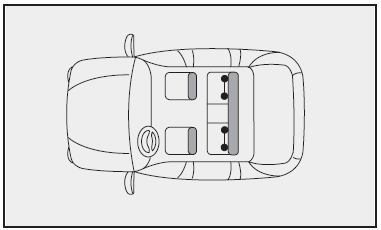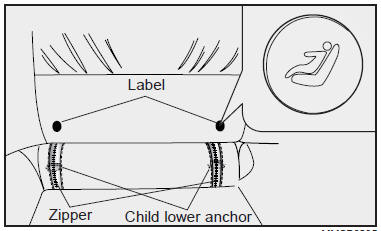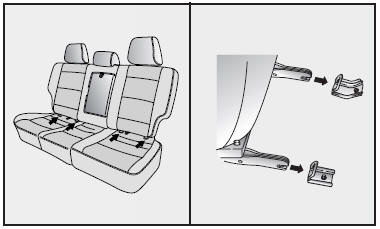 Kia Optima: Child seat lower anchors
Kia Optima: Child seat lower anchors

Some child seat manufacturers make child restraint seats that are labeled as ISOFIX or ISOFIX-compatible child restraint seats. These seats include two rigid or webbing mounted attachments that connect to two ISOFIX anchors at specific seating positions in your vehicle. This type of child restraint seat eliminates the need to use seat belts to attach the child seat for forwardfacing child restraint seats.

There is a symbol located on the lower portion of each side of the rear seatbacks. These symbols indicate the position of the lower anchors for child restraints so equipped. A zipper is located directly beneath each indicator, which when opened will expose the metal anchor.

ISOFIX anchors have been provided in your vehicle. The ISOFIX anchors are located in the left and right outboard rear seating positions. Their locations are shown in the illustration. There is no ISOFIX anchor provided for the center rear seating position.
The ISOFIX anchors are located between the seatback and the seat cushion of the rear seat left and right outboard seating positions.
Follow the child seat manufacturerŌĆÖs instructions to properly install child restraint seats with ISOFIX or ISOFIX-compatible attachments.
Once you have installed the ISOFIX child restraint, assure that the seat is properly attached to the ISOFIX and tether anchors. Also, test the child restraint seat before you place the child in it. Tilt the seat from side to side. Also try to tug the seat forward. Check to see if the anchors hold the seat in place.
![]() WARNING
WARNING
- If the child restraint is not anchored properly, the risk of a child being seriously injured or killed in a collision greatly increases.
- Do not mount more than one child restraint to a single tether or to a child restraint lower anchorage point. The improper increased load may cause the anchorage points or tether anchor to break, causing serious injury or death.
- Do not install a child restraint seat at the rear center seating position using the vehicleŌĆÖs ISOFIX anchors. The ISOFIX anchors are only provided for the left and right outboard rear seating positions. Do not misuse the ISOFIX anchors by attempting to attach a child restraint seat in the middle rear seating position position to the ISOFIX anchors. In a crash, the child restraint seat ISOFIX attachments may not be strong enough to secure the child restraint seat improperly in the rear center seating position and may break, causing serious injury or death.
- Attach the ISOFIX or ISOFIX-compatible child restraint seat only to the appropriate locations shown in the illustration.
- Always follow the installation and use instructions provided by the manufacturer of the child restraint.
 Child restraint anchorage position
Child restraint anchorage position
Your vehicle is equipped with an anchor for securing the tether strap of a child
restraint system (child seat).
The child restraint anchor fittings are installed on the shelf behind the rear
se ...
 Air Bag - Supplemental Restraint System
Air Bag - Supplemental Restraint System
What Your Air Bag System Does
Your vehicle is equipped with a dual Supplemental Restraint System (SRS), which
includes an airbag for the driver and another airbag for the front seat passenger.
Th ...
See also:
Intake Manifold. Components and Components Location
Components
1. Intake manifold assembly
2. Electronic throttle body
3. Intake manifold stay
4. Intake manifold gasket
...
Storage compartment
These compartments can be used to store small items.
CAUTION
To avoid possible theft, do not leave valuables in the storage compartment.
Always keep the storage compartment covers closed while ...
Moving the front seat forward and backward
Push the control knob forward or backward to move the seat to the desired position.
Release the knob and the seat will lock in that position.
1. Reclining Control Knob
2. Sliding and Height Adju ...
